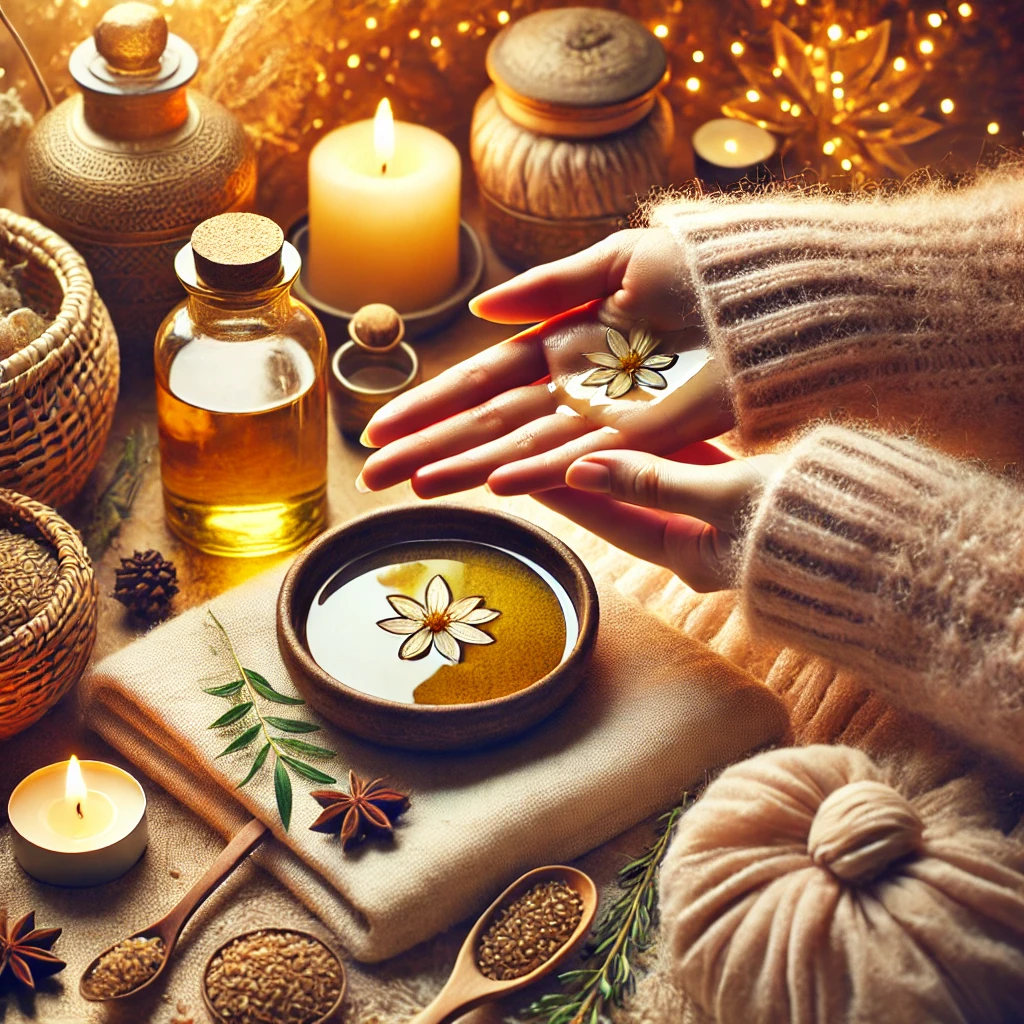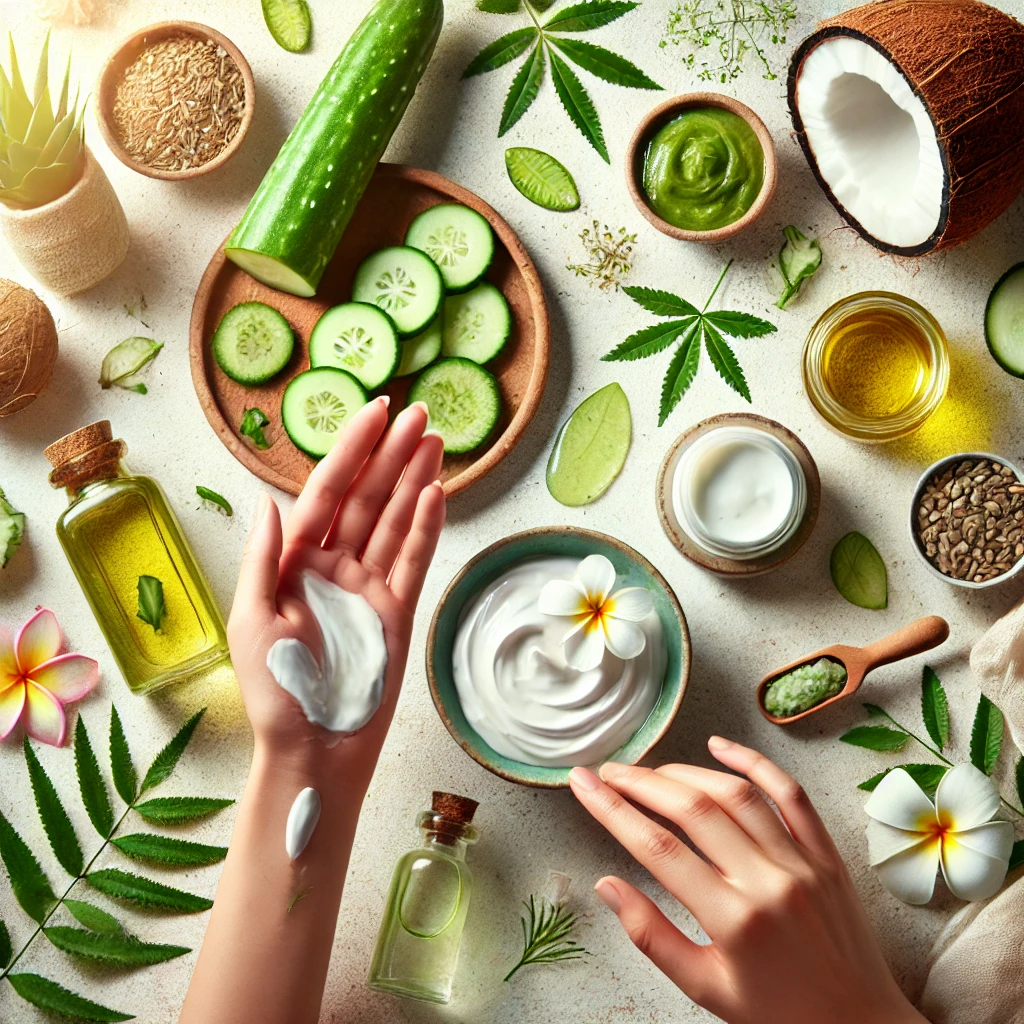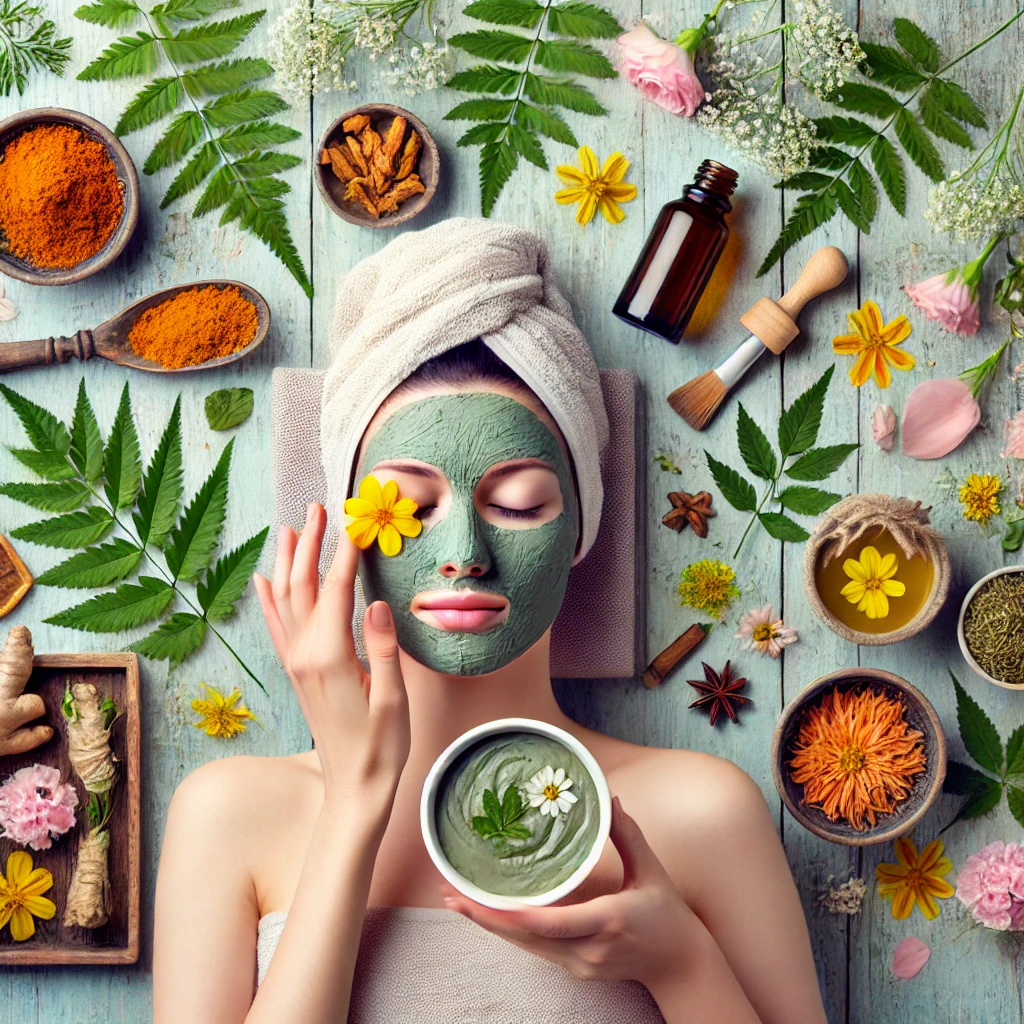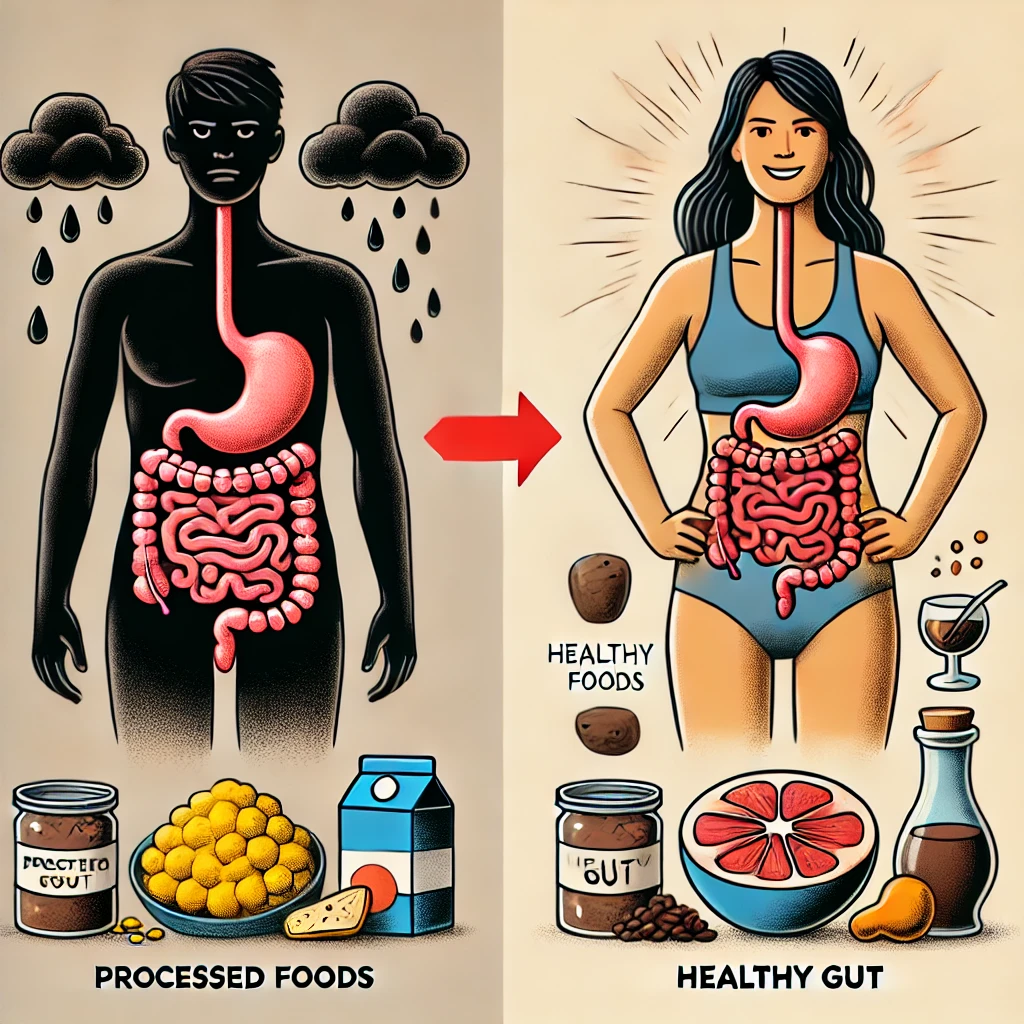Have you ever wondered why your skin feels great in one season but not in another?
The truth is, the skin is highly sensitive to the changing seasons, and each season brings its own set of challenges. Dry, flaky skin in the winter, oily breakouts in the spring, and sunburns in the summer—all of these are indicators that our skin needs different care depending on the weather.
In Ayurveda, this concept of adjusting our lifestyle and skincare based on the seasons is known as Ritucharya. It’s a practice that has been followed for thousands of years to maintain balance in the body and mind as the environment around us changes.
So, how exactly does Ayurveda suggest we care for our skin in different seasons? Let’s dive into a season-by-season guide to Ayurvedic skincare, and explore how you can keep your skin healthy and glowing year-round.
1. Understanding Ritucharya: The Ayurvedic Approach to Seasons
Before we get into specific skincare routines, it’s important to understand the Ayurvedic concept of Ritucharya. Ayurveda teaches that the body’s internal balance changes with the seasons, and that includes the state of our skin. Each season is dominated by one of the three doshas—Vata, Pitta, or Kapha—and each dosha brings its own unique qualities that affect the skin.

- Vata (Fall/Winter): Cold, dry, and rough, Vata is dominant during the colder months. This is why your skin often feels dry and flaky during the winter.
- Pitta (Summer): Hot, sharp, and oily, Pitta is predominant in the summer, which explains the increased risk of sunburns, rashes, and acne.
- Kapha (Spring): Cool, moist, and heavy, Kapha dominates in the spring, often leading to excess oil production and clogged pores.
By adjusting your skincare and lifestyle to balance these doshas, you can prevent seasonal skin problems and enjoy healthy, radiant skin year-round.
2. Winter Skincare (Vata Season): Hydrate and Nourish
As winter approaches and the Vata dosha takes over, you might notice your skin becoming dry, flaky, and more sensitive. This is the time to focus on deep hydration and nourishment to protect your skin from the cold, dry air.
- Oil Massage (Abhyanga): One of the best ways to balance Vata is by performing a daily self-massage with warm oils like sesame or almond oil. These oils penetrate deep into the skin, providing lasting moisture and keeping the skin soft and supple.
- Moisturizing Face Masks: Ayurveda recommends using natural ingredients like avocado, honey, and coconut milk to hydrate the skin. These ingredients lock in moisture and soothe irritation caused by the dry winter air.

- Dietary Support: In winter, it’s essential to nourish your skin from within. Ayurveda suggests incorporating warming, nourishing foods into your diet, such as ghee, root vegetables, and warm soups. These foods not only provide internal hydration but also help maintain a healthy glow.
- Herbs and Oils: Ayurvedic herbs like ashwagandha and shatavari can help support the body’s resilience against the drying effects of Vata season. You can also use saffron-infused oils to enhance your winter skincare routine.
3. Summer Skincare (Pitta Season): Cool and Soothe
Summer is ruled by the fiery Pitta dosha, which means your skin is more prone to heat-related issues such as sunburn, rashes, and inflammation. The key to balancing Pitta in the summer is to cool and soothe the skin.
- Cooling Oils: Swap your heavy winter oils for lighter, cooling oils like coconut or sandalwood oil. These oils have a natural cooling effect on the skin and help calm irritation.
- Aloe Vera and Rose Water: Aloe vera gel is one of the best Ayurvedic remedies for soothing sunburns and reducing inflammation. Similarly, rose water acts as a natural toner that cools and hydrates the skin without clogging pores.

- Herbal Face Masks: Use cooling ingredients like cucumber, mint, and turmeric in face masks to calm the skin and prevent acne. These ingredients help balance the excess heat of the Pitta dosha.
- Dietary Tips: Ayurveda recommends avoiding spicy, acidic, and oily foods during the summer as they aggravate Pitta. Instead, focus on cooling foods like cucumbers, melons, and mint to keep your body (and skin) cool from the inside out.
4. Spring Skincare (Kapha Season): Cleanse and Detoxify
Spring is Kapha season, which brings moisture, heaviness, and a tendency toward oiliness and congestion in the skin. The goal in the spring is to detoxify the skin and reduce excess oil.
- Exfoliation: Regular exfoliation is crucial during the Kapha season to prevent clogged pores and keep the skin fresh. Use gentle, natural exfoliants like oats or chickpea flour (besan) to slough off dead skin cells and promote circulation.
- Clay Masks: Clay masks made with multani mitti (Fuller’s Earth) or neem powder help draw out impurities and balance excess oil production. Neem, in particular, is excellent for detoxifying the skin and preventing breakouts.
- Dry Brushing: Another Ayurvedic practice to incorporate in the spring is dry brushing. This stimulates lymphatic drainage and helps the body eliminate toxins, which can prevent dull skin and blemishes.
- Kapha-Pacifying Diet: To balance Kapha, Ayurveda suggests incorporating warming, light foods into your diet, such as ginger, turmeric, and bitter greens. Avoid heavy, fried, and overly sweet foods as they can increase oil production.
5. Herbs and Natural Ingredients for All Seasons
No matter the season, Ayurveda offers a variety of herbs and natural ingredients that can be used year-round to maintain healthy skin. Here are a few versatile ingredients that can be incorporated into your skincare routine for their balancing properties:
- Turmeric: Known for its anti-inflammatory and antibacterial properties, turmeric is great for reducing acne, soothing irritation, and brightening the complexion.
- Neem: This powerful herb is ideal for balancing oil production and preventing acne, making it especially useful during Kapha season.

- Saffron: Saffron is often used in Ayurvedic skincare for its ability to enhance radiance and reduce pigmentation. It’s especially beneficial for dull winter skin.
- Aloe Vera: Aloe vera’s cooling, soothing properties make it a must-have for summer skincare, but it’s also helpful for hydrating and healing the skin in all seasons.
6. Adjusting Your Diet for Radiant Skin
Your skin’s health isn’t just about what you put on it—it’s also about what you put into your body. Ayurveda places great emphasis on eating in harmony with the seasons to support not only overall health but also skin health. Here are some dietary tips to complement your Ayurvedic skincare routine:
- Winter: Focus on warming, nourishing foods like ghee, warm soups, and spices such as cinnamon and ginger to keep your skin hydrated and nourished.
- Summer: Eat cooling foods like cucumbers, watermelon, and mint to prevent heat-related skin issues such as acne and inflammation.
- Spring: Incorporate detoxifying foods such as bitter greens, lemon, and turmeric to cleanse the skin from within and reduce excess oil.
7. DIY Ayurvedic Skincare Recipes for Every Season
To make this blog even more practical, you can share a few easy DIY recipes for readers to try at home. Here are some ideas:
- Winter Hydrating Mask: Mix avocado with honey and olive oil for a deeply hydrating face mask that soothes dry skin.

- Summer Cooling Toner: Combine rose water with cucumber juice for a refreshing, cooling toner that keeps your skin hydrated and clear during the hot months.
- Spring Detox Mask: Blend neem powder with yogurt and a pinch of turmeric to create a detoxifying mask that helps clear congested skin and prevent breakouts.



